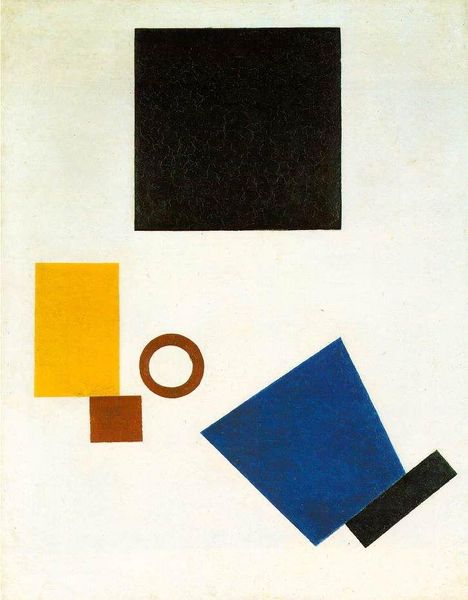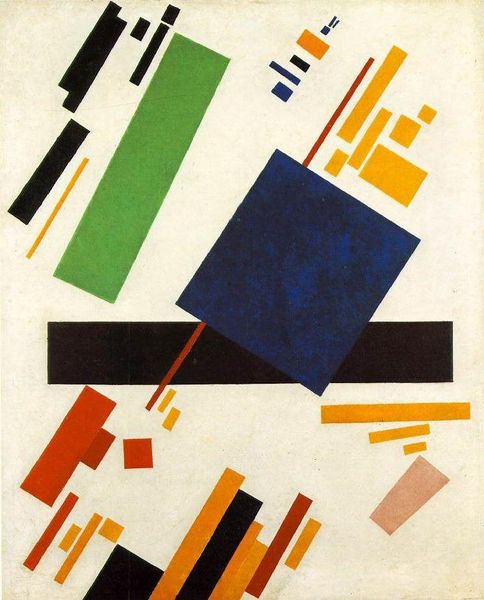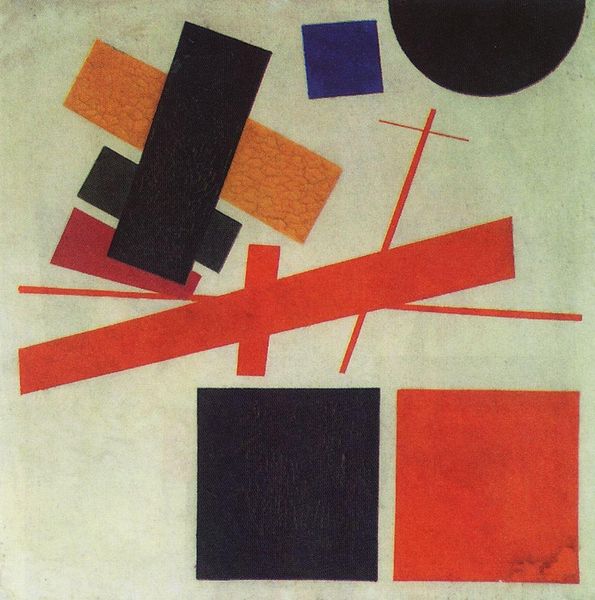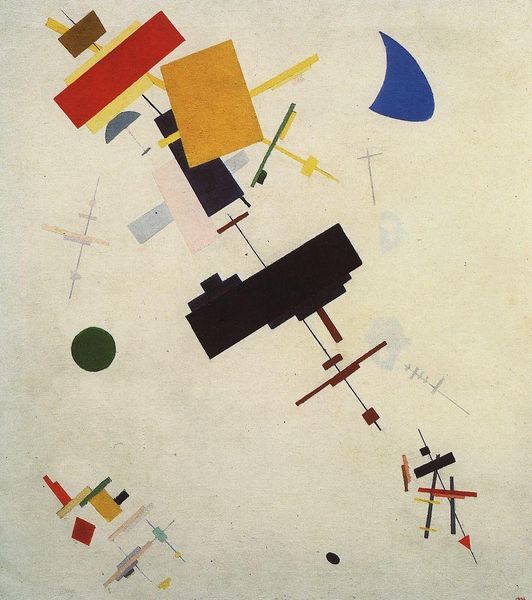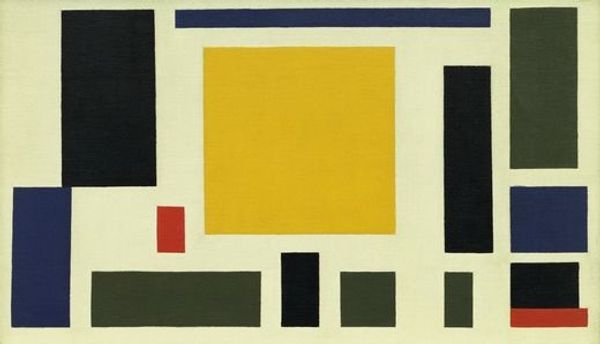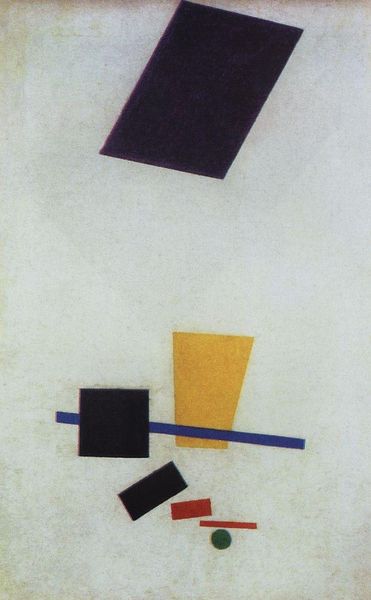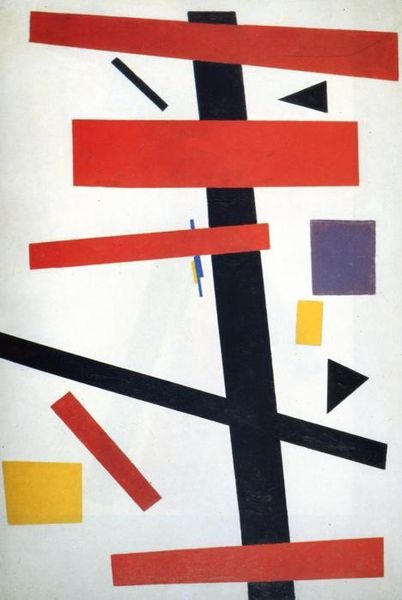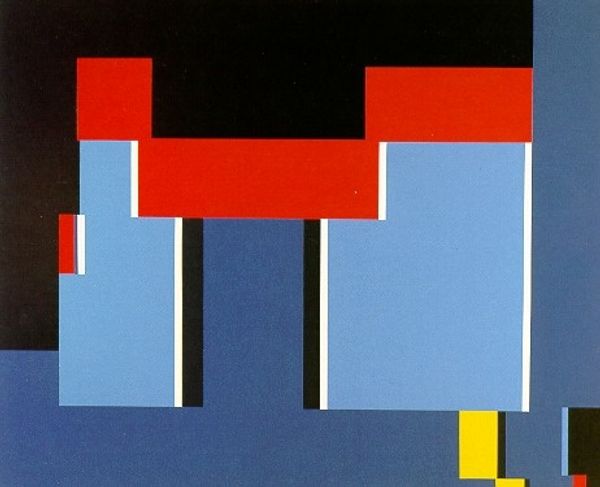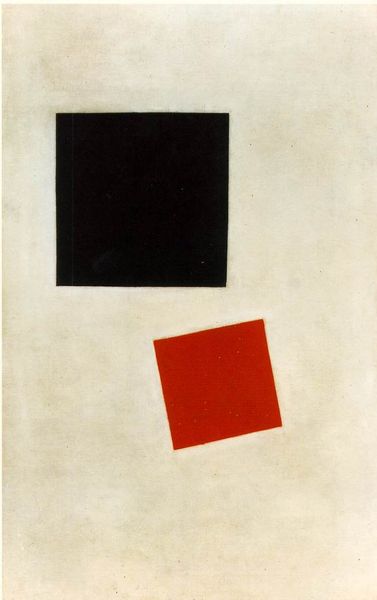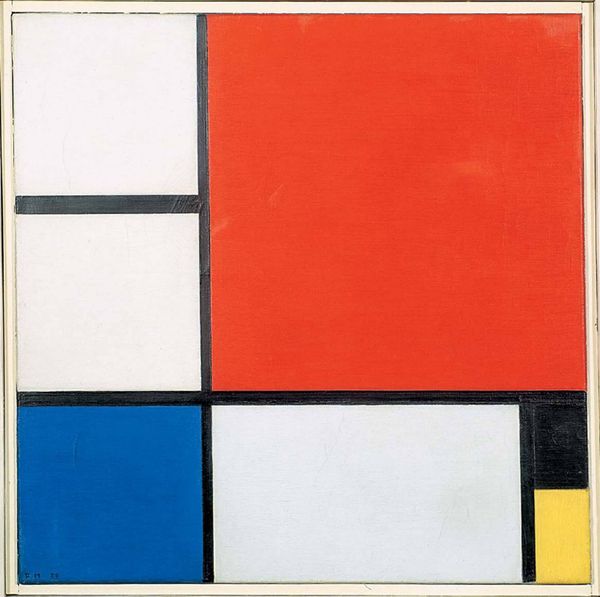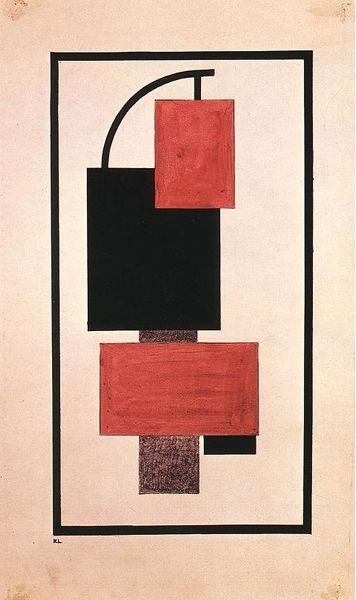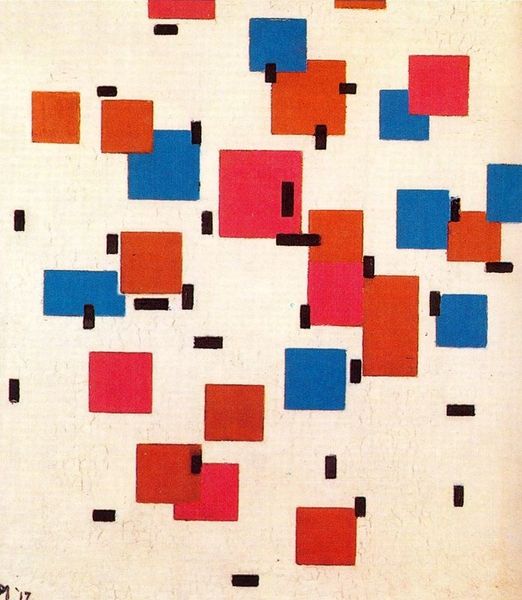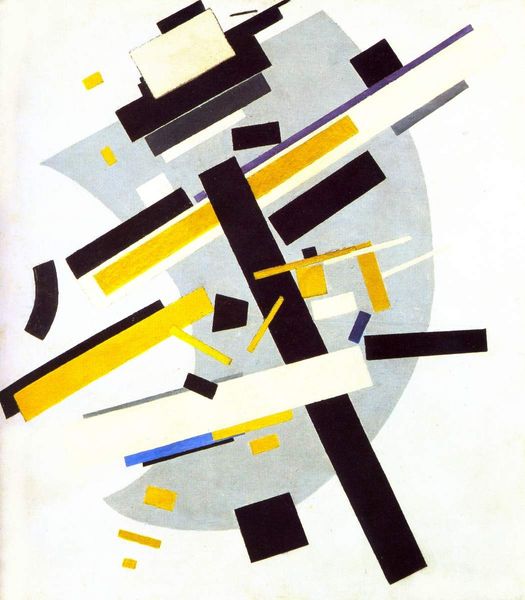
Suprematist Composition: Aeroplane Flying 1915
0:00
0:00
kazimirmalevich
Museum of Modern Art (MoMA), New York City, NY, US
#
non-objective-art
#
form
#
geometric
#
abstraction
#
line
#
russian-avant-garde
#
suprematism
Copyright: Public domain
Curator: Here we have Kazimir Malevich's "Suprematist Composition: Aeroplane Flying" painted in 1915. It currently resides here at MoMA. Editor: My first impression is how remarkably balanced it feels despite the seemingly random scattering of geometric forms. The colors are so grounded, almost earthy, yet also incredibly dynamic against that stark white ground. Curator: Well, let’s consider the context in which this work emerged. Malevich was deeply influenced by the industrialization and utopian ideals sweeping through Russia at the time. The materials he uses – humble paints, canvas – belie the grand aspirations he held for this new, non-objective art. This was about forging a new visual language suited to a modern, mechanized world. Editor: Absolutely. The Suprematist movement was so radical! Malevich sought to strip away all representational elements and arrive at what he termed the "zero degree" of painting. I mean, he truly believed that abstraction could unlock new spiritual and social possibilities. We see this utopian reach echoed in manifestos of the era that address equality for gender and the peasantry in a rapidly modernizing society. Curator: And it's essential to remember the manual labor involved. Despite its appearance of clean, machine-like precision, it's all hand-painted, each rectangle and line carefully considered. This reveals the hand of the artist. Consider too how the paintings were viewed and understood during revolutionary upheaval. Editor: And, while non-objective, one still reads cultural assumptions onto this work, yes? How can we ever truly separate a viewer’s personal politics or history from interpreting its shapes, forms, and color relationships, particularly considering its emergence in this radical context? We are seeing shapes in dialogue; the push and pull between order and chaos—is that so separate from other parts of society? Curator: A critical question, absolutely! This work speaks to a specific history, process and artistic labor and also exists as a global touchstone and product consumed by people across socioeconomic spectra today. The question persists: How do we make or understand paintings through present and past concerns, not to erase these complicated circumstances and realities? Editor: It does challenge us. Despite its age, the dialogue it incites about modernity, labor, and the relationship between art and society remains vital. Curator: Indeed. By attending to the historical process, we can perhaps glean insight into both Malevich’s intentions and our own interpretive frameworks.
Comments
No comments
Be the first to comment and join the conversation on the ultimate creative platform.
